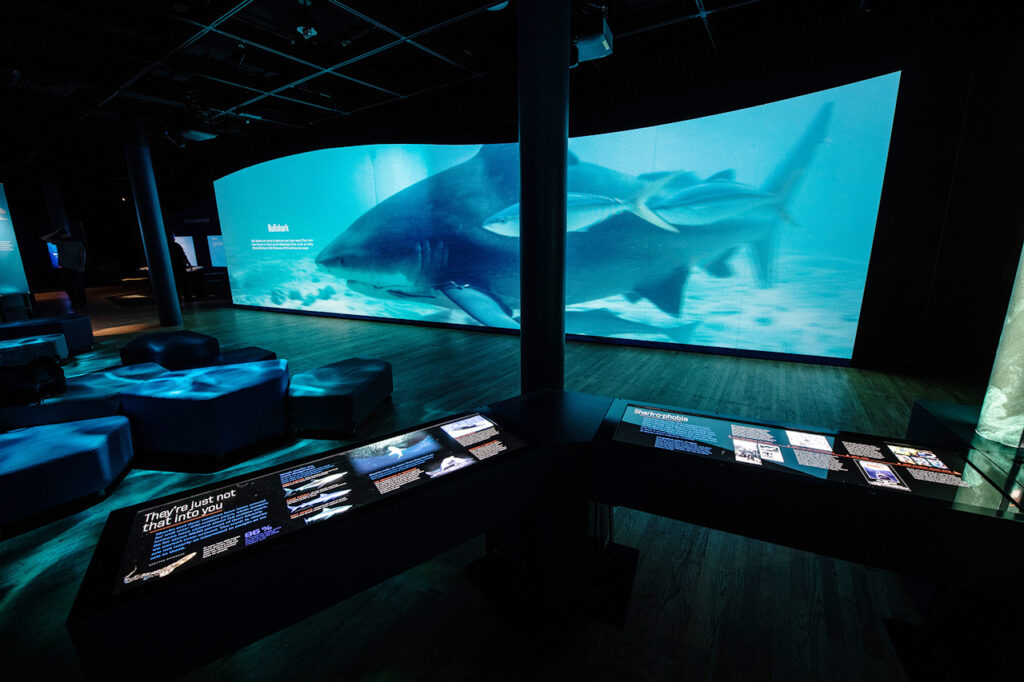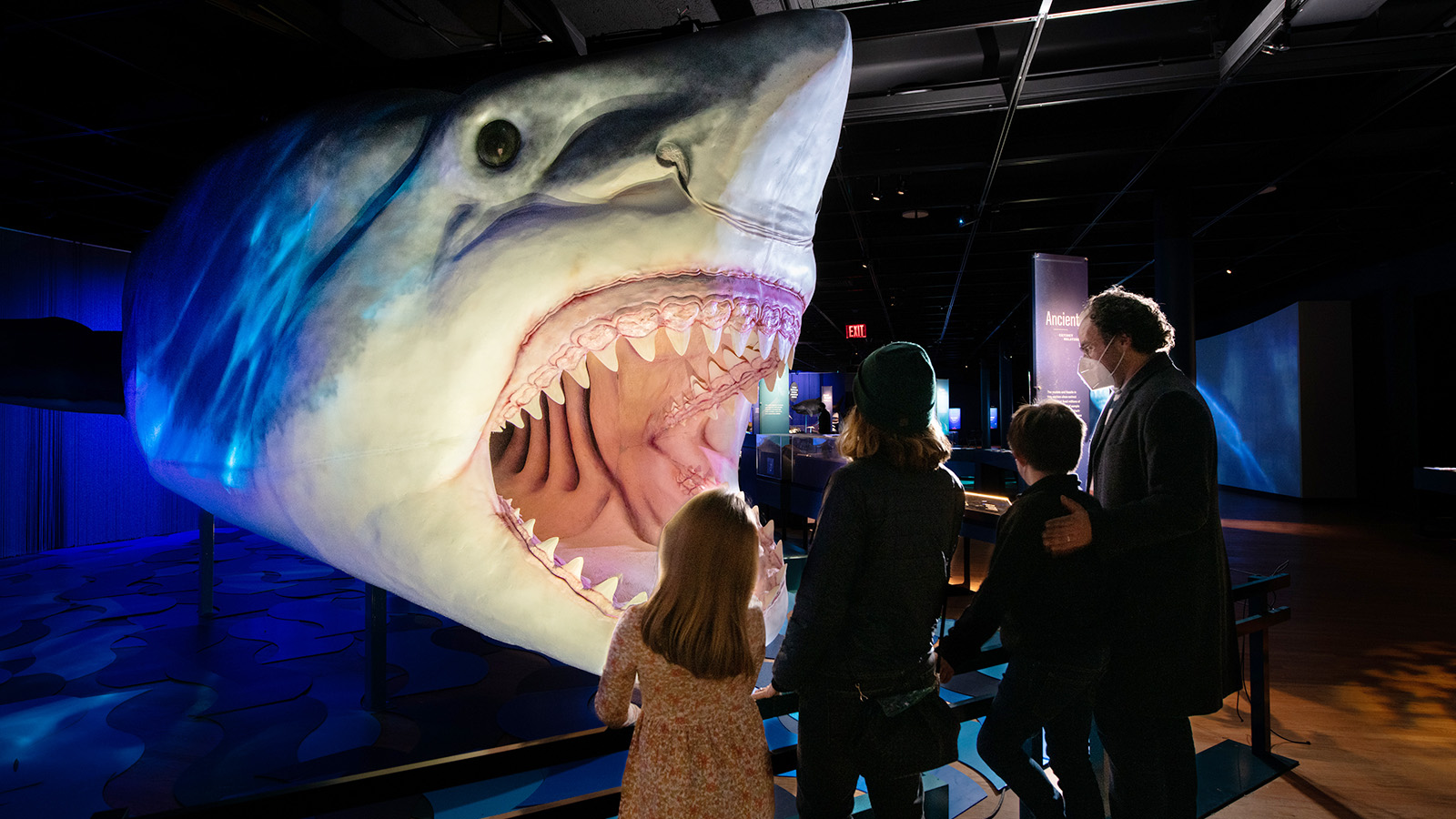Until August 2022, the American Museum of Natural History (AMNH) is hosting the exhibition, Sharks, to educate visitors about sharks through life-size models, animations, and videos provided by Discovery’s Shark Week.
Sharks took approximately 18 to 24 months to develop, and features interactive installations like a video booth that transforms visitors’ heads into sharks, a Hunt Like a Hammerhead video game where visitors “hunt” for rays, several no-touch information centers on shark biology, and another game that compares shark defense mechanisms with other creatures.

In addition to fossils and life-size models of sharks, the exhibition also includes installations examining humans’ interaction with sharks, with a portion of footage provided by Discovery’s Shark Week. Image: D. Finnin / © AMNH
According to Brett Peterson, Associate Director of Exhibition Media and Interactives, the AMNH always includes interactive technology in its exhibitions. “We’ve found that many of our visitors learn and understand the concepts presented when actively engaged in participating in our exhibitions,” he says, noting that all interactive media was developed in-house, with help from freelancers.
“For Sharks specifically, we created many large-scale projections to bring motion and life into the space, and our interactive experiences are designed to build empathy with sharks,” with Hunt Like a Hammerhead being particularly popular. “Visitors control the onscreen shark using gestures above a hand-tracking sensor and can feel tactile pulses of air from an ultrasonic speaker array designed to simulate hammerhead electroreception,” Peterson says. “It’s an incredibly interesting sensation that really must be experienced in person.”

The touch-free interactive exhibit Hunt Like a Hammerhead invites visitors to direct a shark, which uses electroreception — a sixth sense that allows sharks to detect invisible electromagnetic fields — to detect prey. Image: D. Finnin / © AMNH
And to ensure the exhibition complied with pandemic-related precautions, the AMNH updated the museum exhibit tools. “We redesigned all of the push-button exhibits to make use of sensors that you can activate simply by waving your hand over them, and those are so successful that I’m not sure we’ll ever go back,” says Lauri Halderman, Vice President for Exhibition.
Ultimately, Sharks aims to provide new insights into sharks and their relatives through a conservation-centered perspective. “Shark attacks on swimmers are very rare, but they make headlines and convince people that sharks are very dangerous to us,” Halderman says. “In reality we are a much bigger danger to sharks,” she adds, noting that tens of millions of sharks are accidentally caught as bycatch annually and many species are now endangered.
She also says moving forward, the museum plans to release more tech-centered exhibitions. “We’re also developing several new permanent exhibitions for our Gilder Center for Science, Education and Innovation that’s still under construction, and a number of the galleries there feature some pretty fun digital exhibits,” she says.



